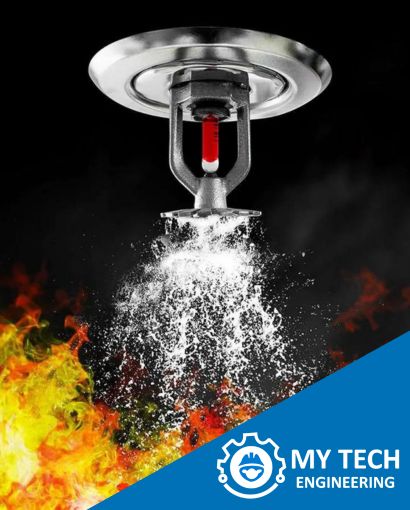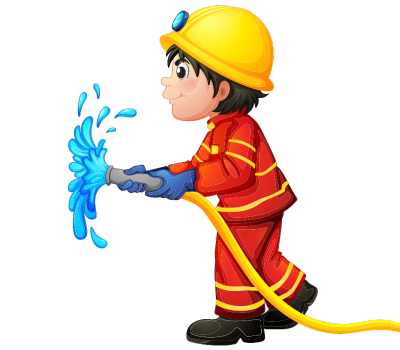Fire Sprinklers System
Fire Sprinklers System
Fire sprinklers are a crucial component of fire protection systems in buildings. These systems are designed to automatically detect and suppress fires in their early stages, helping to minimize property damage, protect lives, and provide additional time for occupants to evacuate.

Sprinkler Heads:
Distribution Points: Sprinkler heads are strategically placed throughout a building, typically on the ceiling. Each sprinkler head covers a specific area or “zone.”
Temperature-Sensitive Elements: Sprinkler heads contain temperature-sensitive elements that respond to heat. When the ambient temperature around a sprinkler head rises to a certain level, the element activates, allowing water to flow.
Individual Activation: Contrary to common myths, fire sprinklers are activated individually. Only the sprinkler head(s) directly exposed to the heat from the fire will activate.
Piping System:
Water Supply: Fire sprinkler systems are connected to a reliable water supply, such as the municipal water system or a dedicated water storage tank.
Piping Network: Pipes run throughout the building, supplying water to the sprinkler heads. The piping system is pressurized to ensure a rapid response when a sprinkler is activated.
Control Valves: Control valves are used to regulate the flow of water through the piping system. They may include main control valves, alarm valves, and check valves.
Alarm System:
Detection Devices: Some fire sprinkler systems include detection devices (such as smoke detectors or heat detectors) that can trigger the sprinklers if a fire is detected.
Alarm Signaling: When a sprinkler is activated, it may trigger an alarm system to alert occupants and emergency responders.
Pump and Water Storage:
Pump Systems: In some cases, buildings may require pumps to ensure adequate water pressure in the sprinkler system.
Water Storage Tanks: Some buildings have dedicated water storage tanks to provide a continuous water supply in the event of water main failure.
Sprinkler System Control Panel:
- Central Control: A control panel is often installed to monitor the status of the sprinkler system, including water pressure, alarm conditions, and system health.
Testing and Maintenance:
- Regular Inspections: Periodic testing and maintenance are crucial to ensure the reliability of the fire sprinkler system. This includes checking for leaks, testing alarm systems, and ensuring proper water flow.
GET YOUR FREE CONSULTATION
My Tech offers a Wide variety of services to cater your problematic situations.










